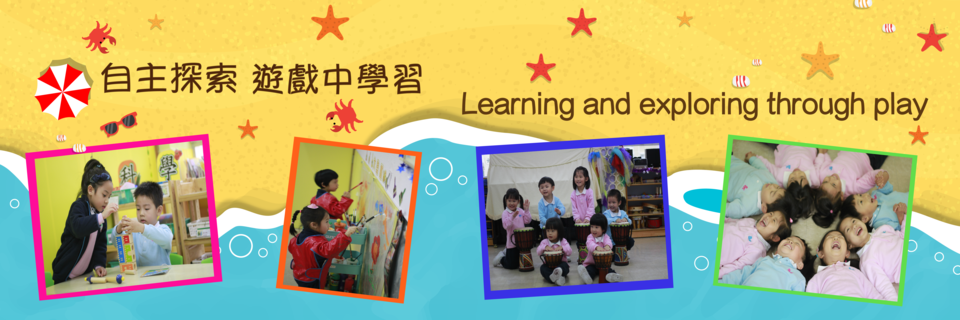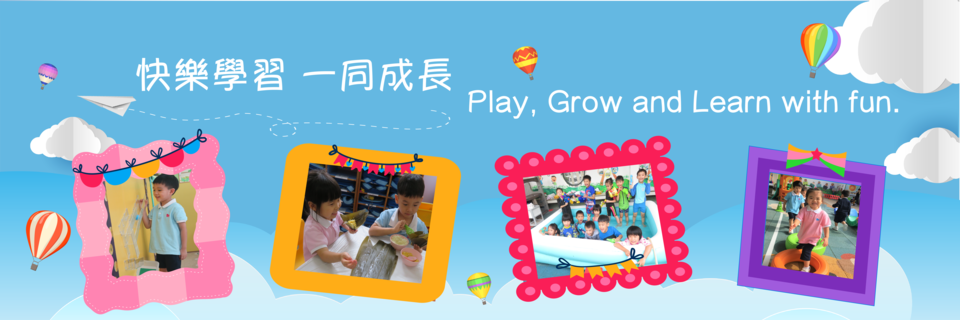Parent Education Activity Information Hub
Lee Siu Chan Kindergarten-Cum-Nursery - Parent Education Activity Information Hub

Seminar Topic:
Safety of Toys and Children's Products
Objectives:
- Learn how to identify and choose safe and regulated toy products
- Identify the characteristics of "unsafe" toys and avoid purchasing them to prevent harm to children.
Details:
Although all toys available in the Hong Kong market are subject to Customs regulation and can be reported to Customs in case of problems, it is crucial for parents to prioritize their children’s safety and prevent harm to children by purchasing safe toys. Let's explore the dangers associated with “unsafe” toys.
Brightly coloured toys:
Bright colours are helpful for visual development in infants and young children. However, some toy coatings/paints may contain high levels of lead and barium, which can be toxic. Parents are advised to buy toys with these coatings from reputable stores.
Crystal babies (Gel beads):
Crystal babies are gel beads that expand when they absorb water, and have attractive colours. But if children accidentally swallow them, their swelling properties can cause choking, intestinal obstruction, and even death!



Aeroplane Chess:
Aeroplane Chess is a commonly enjoyed childhood game, but the thin plastic chessboard sheet can pose a suffocation risk if it covers a child's nose and mouth. The plastic bags used for packaging may also pose a suffocation hazard. Be careful about this.
Magnetic toys:
Toys containing small magnets are absolutely not suitable for children to play with without supervision. If a child swallows two or more magnets, it can cause intestinal obstruction, resulting in serious harm to the body or even death.
Toy guns:
Toy guns are often popular with boys, but when they are capable of launching and shooting dangerous projectiles such as chopsticks, they are no longer just "toy" guns.
Toys indeed can pose various dangers. By following these guidelines, parents can significantly reduce the chances of harm by choosing age-appropriate toys and supervising their children during playtime.
Highlights
Lecture Topic:
Parental Lecture - A Basic Overview of Young Children's Physical Fitness and Nutrition
Objective:
To understand how to establish healthy eating habits and physical activity for children, enabling them to lead a healthy lifestyle.
Content:
Parents often become concerned about their children's nutrition when they are picky eaters, worrying that their diet may be imbalanced or inadequate. On the other hand, when children overeat, parents may fear that their child will become overweight. Therefore, the school has invited a nutritionist and physical fitness advisor from “[email protected]” Campaign to conduct the lecture. Let us review the recommended daily dietary intake and physical activity for young children!
Grains:
1 serving of grains = 1 tablespoon of rice; 1/3 bowl of pasta; 1/2 slice of bread
N-K1: 8-12 servings
K2-K3: 12-15 servings
Vegetables:
1 serving of vegetables = 1/2 bowl
N-K1: at least 1.5 servings
K2-K3: at least 2 servings

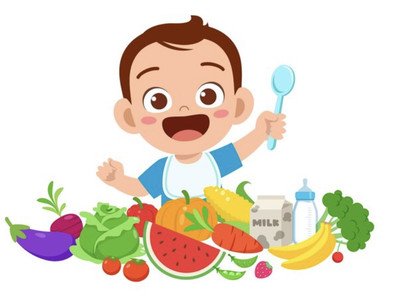
Fruits:
1 serving of fruit = 1/2 bowl/1 medium-sized fruit
N-K1: at least 1 serving
K2-K3: at least 2 servings
Meat:
1 serving of meat = the size of a ping pong ball
N-K1: 1.5-2 servings
K2-K3: 2-3 servings
Milk:
1 serving of milk = 1 cup
2-5 years old: low-fat milk
5 years old and above: skimmed milk/low-fat milk
We all know that adults should drink eight glasses of water a day, but did you know that four to five glasses of water are enough for children, including milk, soy milk, and clear soup? Remember to check if the drinks are too sugary!
Suggested physical activities for young children:
For 2-year-old children:
It is recommended that they accumulate at least 180 minutes of physical activity at varying intensities each day.
For 3–6-year-old children:
They should aim to accumulate at least 180 minutes of physical activity at varying intensities each day, including at least 60 minutes of moderate to vigorous intensity activity.
* Low-intensity activities include sitting quietly, sweeping the floor, playing the piano, etc.
* Walking, brisk walking, social dancing, swimming or ball games are medium to high-intensity
activities.
* Screen time is recommended to be limited to one hour a day, which should include electronic
information with educational and interactive elements.
* Parents who would like to learn more can refer to the “Start Smart Parent Guide”.
Highlights
Objective:
Parents’ Seminar on Positive Discipline
“Positive discipline” is the cultivation of children’s self-discipline through mutual respect and cooperation, guided “gently and firmly”. To alleviate the pressure of discipline on parents, Ms Fung, Deputy Director of Wai On Home for Women of the Kuk, held a “Parents’ Seminar on Positive Discipline” for parents. We now invite parents to learn the key points shared in the seminar on that day!
Methods of Establishing “Positive Discipline” - Communication Skills
Encourage children to actively engage in conversation
1. Use encouraging statements
2. Assist children in expanding the topic
3. Avoid using Yes/No questions or asking “Why”
Listen actively
1. Concentrate
2. Observe the child’s tone and expression
3. Put oneself in the shoes of the children
4. Response simply
Concentrate on the “I” message
1. Take “I” as the subject (e.g., I am feeling
embarrassed now. We might affect the others
who want to rest if we talk loudly on the street.
We should lower our voice)
2. Help children understand how others feel


Methods of Establishing Positive Discipline – Concentration, Attentiveness, Appreciation, Sincerity, Willingness
Concentration:
1. Put down the work at hand
2. Concentrate on listening
3. Respond appropriately
Attentiveness:
1. Observe the child’s expression and tone
2. Body posture
Appreciation:
1. Show appreciation and commend appropriately
Sincerity:
1. Openness
2. Equality
3. Respect
Willingness:
1. Both parties should be willing to communicate
2. Be willing to change
3. Be willing to accept
Highlights
Seminar Topic:
Parent Seminar: Supporting Children in Transition to Primary School
Objectives:
- Enable participants to gain a deeper understanding of the challenges children encounter when adapting to primary school.
- Help participants develop effective strategies to support children in coping with adaptation difficulties.
Details:
Kindergarten and primary school represent distinct environments, raising various concerns among parents during their children's transition to primary school. In response, the school’s social workers recently organized a seminar for parents, aiming to enhance their comprehension of the obstacles children may face when transitioning to primary school. By preparing in advance, parents can facilitate a smooth adjustment and foster a joyful primary school experience for their children.
Common Adaptation Challenges and Recommendations after Transitioning to Primary School:
1. Late submission of homework / Forgetting to bring textbooks
Primary school introduces a greater workload of subjects and homework compared to kindergarten, accompanied by a varying daily curriculum. During the adaptation period, children need practice in filling in the homework handbook and organizing their textbooks according to a timetable. Mistakes are inevitable, so parents can offer early support by guiding their children to follow the timetable and pack their backpacks with the necessary books.
2.Aversion to learning
Kindergartens often encourage children to learn through play, while primary school emphasizes textbook-based learning and assignments, with the content being more challenging. Apart from boredom, children may also experience frustration. It is advisable for parents to provide their children with appropriate rest time, acknowledge their efforts, and avoid undermining their abilities based on less-than-ideal grades.
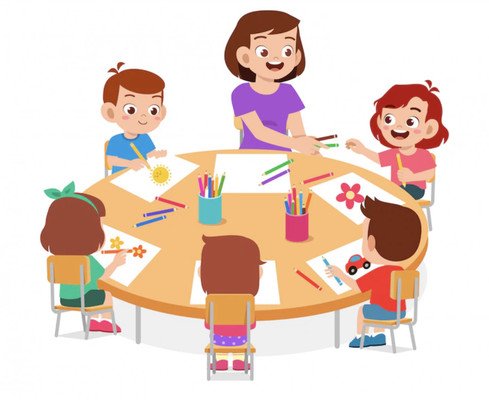

3. Fear of facing unfamiliar teachers and classmates
Leaving behind familiar classmates and teachers, children enter an unfamiliar environment where they encounter new teachers and classmates. Naturally, they may feel nervous and anxious. The time required for each child to adapt to this new environment may vary. Parents are encouraged to validate their children's genuine feelings and foster connections with new classmates, emphasizing the benefits of transitioning to primary school. If necessary, parents can accompany their children back to kindergarten for visits with their previous teachers and caregivers.
4. Incontinence
While children may have successfully overcome bedwetting in kindergarten, primary school imposes restrictions on restroom usage only during designated break times. Due to limited time awareness and a focus on play during breaks, children may be reluctant to raise their hands and ask the teacher for permission during class, leading to instances of incontinence. Parents can establish a structured daily routine at home, reminding their children to use the restroom before engaging in playtime.
Parents who support their children through the challenges of the primary school phase also face their own pressures. However, recognizing this as an inevitable journey for children, providing companionship, affirmation, and encouragement throughout the process will empower children to confront the primary school’s hurdles with courage.
Highlights
Objective:
LITTLE MASTER CHEFS- Parent-Child Kitchen Adventures and Understanding Free Play
Dear parents, do you still remember playing a lot when you were young? What does the concept of “play” mean to you? How does playing make you feel?
Definition of Free Play
The Education Bureau defines “free play” as behavioural activities motivated by children’s inner desires that emphasise their autonomy, free participation, and lack of constraints from rules or predetermined objectives set by adults. Children can choose play tools, methods, playmates, and activity areas during “free play”.
And for children, what is “play”?
1. Happiness, fun, and excitement
2. Initiated by the child
3. “I have a choice.”
4. Opportunities to establish their own rules
5. Time spent with peers/friends
6. Time spent without adults

We often discuss the significance of parent-child play in children’s development, yet children perceive play as “time spent without adults”. There is an apparent ontradiction, don’t you think?
Let's reflect on the instances when we played with our children. Did we unknowingly ask them cognitive questions (for example, questions about colours, shapes, or object names)? Did we offer guidance and correction when children played with toys in a manner we considered “incorrect”? These interactions can transform “play” into a form of “learning”.
Actually, the notion of “time spent without adults” simply reflects children’s desire for their parents to become their playmates, fostering an environment of equal and joyful play. Parent-child play continues to be highly important for children.
The Importance of Play in Children's Development
It is normal for parents to hope that children acquire knowledge through play. Furthermore, aside from being considered the most suitable learning method for children’s developmental needs, play can also reduce the risk of children developing depression and anxiety in the future.
Let’s check out the following toy examples and understand how free play contributes to children’s development.
1. Playing with a cooking set:
# Learning food and tool names (cognition)
# Understanding tool usage and operating techniques (cognition and fine motor skills)
# Expressing food preferences to others (social communication)
# Role-playing as a chef, diner, waiter, etc. (empathy, understanding diverse social roles)
2. Playing with building blocks:
# Decision-making on building structures/shapes (creative thinking)
# Material selection (cognition, executive ability, flexible thinking)
# Building skills (fine motor skills, concentration)
# Managing failures during the creative process (emotional regulation, resilience)
# Achieving successful creation (self-confidence, sense of fulfilment)
The Importance of Parent-Child Play
Parent-child play not only fosters emotional connections between parents and children, but also strengthens parent-child relationships. Throughout this interaction, parents can stimulate their children’s thinking, nurture imagination, explore abilities, and enhance social skills. Additionally, older children can learn about rules, discipline, and cooperation.
Techniques for Parent-Child Play
1. Engage fully
2. Participate as your child’s playmate (less of an adult presence)
* Encourage your child in decision-making
* Support your child in managing their own activities
3. Prioritise the process over the outcome
Highlights
Objective:
The Five Love Languages
Dear parents, do you remember how your spouse made you feel loved during the dating phase? And how you expressed your love in return? Was it through sweet words? Through the efforts your partner made for you? Or was it something else?
Have you ever thought about "What makes me feel loved?" and "What can I do to make my partner feel loved?" Everyone might have different answers to these questions. Simply put, the way you and your child or partner express or receive love can vary. When we use the other person's "love language" to express our love, they feel it more easily; otherwise, they might think we don't love them!
The "Five Love Languages" concept applies not only to romantic relationships but also to parent-child interactions. Each of the five languages is important, but one or two might be the most effective for a child to feel loved. Let's explore which one resonates best with your child.
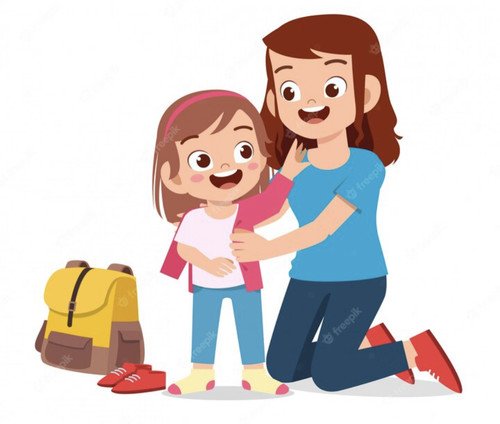

1. Words of Affirmation
"Words of Affirmation" refer to verbal praise, encouragement, and appreciation. This is what we call “seeking compliments”. Sometimes, children may directly or subtly showcase their abilities just to seek your approval. When they receive praise and affirmation, they feel particularly satisfied.
1. Quality Time
"Quality Time" doesn't mean planning special surprises but rather focusing all your attention on the other person. Parents are incredibly precious to children. Even though children know their parents love all siblings equally, they still crave alone time with you. These moments of undivided attention make them feel loved.
3. Receiving Gifts
We often think children love beautiful clothes and various toys. However, children who favour this love language appreciate the thought and effort behind the gift more than the gift itself.
4. Acts of Service
"Acts of Service" means actions speak louder than words. For couples, this might involve helping with household tasks, while for children, it could be frequently asking, "Mom, help me!"
Sometimes it might seem like children are overly dependent or even lazy, but they just want to feel cared for and loved. However, remember to find a balance to avoid doing too much and hindering their growth opportunities.
5. Physical Touch
"Hugs," "kisses," and "holding hands" can make children feel cared for, comforted, and supported. However, it’s important to teach children about physical boundaries with others (beyond parents) to ensure their safety.
The "Five Love Languages" is a useful theory for expressing love and care. Parents can observe their child’s reactions to understand which love language they prefer. Parents can also take the test (https://refresh.bokss.org.hk/tc/five-love-language-test) to understand their own preferred way of receiving love.
Highlights
Objective:
Learning to Reconcile with Yourself
In a recent conversation with a parent, she shared her frustration over her daughter's behavioral challenges. She was especially worried about her daughter's frequent lying and how often she acted defiantly. These behaviors ranged from small issues, like refusing to use the bathroom on her own, to more serious concerns, like having emotional outbursts in public. Although she sometimes understood that her daughter didn’t act this way on purpose, her ongoing uncooperative behavior gradually wore down her patience, causing her considerable distress.
As parents, we always strive to properly educate our children, hoping they will grow up following our guidance and meeting society’s expectations of being “well-behaved”. Certainly, I do not oppose parents guiding their children. However, upon deeper reflection, when faced with their children’s uncooperative behavior, should parents focus solely on teaching without allowing them the space to make mistakes?
As the saying goes, "People may not learn from being taught, but they learn instantly through experience." In this world, there are no perfect children, just as there are no perfect parents. We all start from scratch in learning how to be capable parents. Likewise, children continuously experience different stages of growth from birth. Their behavioral problems can be diverse and unpredictable. Sometimes, parents can only respond to challenges as they arise. Even if today's problem is solved, new challenges may emerge tomorrow or the day after, continuing to cause concern for parents. To truly address children's issues, I believe parents can try to cultivate a sense of reconciliation—accepting themselves to make mistakes while also learning to understand and accept their children's different perspectives. After all, every child has a unique temperament.
So how can parents learn to reconcile with themselves? Reconciling with oneself does not mean ignoring mistakes—whether their own or their child’s. Rather, it means approaching situations with a calm and accepting mindset. People are shaped by their surroundings, and everything around us constantly influences our thoughts and emotions. This includes children’s challenging behaviors, which often frustrate parents. If we can maintain a calm and accepting mindset and allow children to make mistakes within a safe and controlled environment—giving them time to reflect afterward while also trying to understand the thoughts and reasons behind their behavior—this approach can be more effective than preemptively instructing them. Through this process, parents can gain deeper insight into their children's thoughts and feelings. This reflects the wisdom in the saying, "Every experience teaches a lesson."
"Reconciling with yourself" also involves accepting your own imperfections. We can try to embrace an imperfect life and accept our imperfect selves, but we must remember never to stop learning. The same applies to raising children. Everything can be learned and improved through failure over time. Let us continue to learn and grow with our imperfect selves and our children in the days ahead.
Highlights
Objective:
Talking to Children About Love and Sex
When explaining self-protection and how to prevent sexual assault to children, we are often asked: “Who might be a sexual offender?” Our usual answers tend to be: “bad guy”, “thief”, “pervert”, “sicko”, etc. It is worth noting that children often hold stereotypical impressions of sexual offenders: male, malicious, and scary looking. This might align with the “bad guy” image in their minds, but we all know that sexual offenders do not have a specific gender or appearance. Although the majority of sexual offenders are male, there are also female offenders, and they often do not display any obvious “signs” that allow others to recognise them at a glance. Therefore, to truly protect children from harm, they should not be taught to only be wary of strangers, nor should they be encouraged to relax their guard simply because someone is an “acquaintance”. These stereotypes about sexual offenders can actually weaken their awareness of self-protection.
Parents cannot care for and protect their children 24 hours a day, expecting them to never be harmed. The only way children can effectively learn to protect themselves and prevent sexual assault is by cultivating their self-protection skills from an early age and by being encouraged to respond actively.
In the process of sex education, parents should be concise and direct. They should avoid evasion and instead help children establish a sense of self-protection. At the same time, children must also learn to respect others’ physical boundaries. For example, some children like to pull girls’ braids or touch other children’s private parts, which can make others feel upset or uncomfortable. Parents should explain that this kind of behaviour crosses boundaries and violates others’ bodies. Parents also need to help their children understand the concept of bodily autonomy—that is, to let them know they are the masters of their own bodies, and no one has the right to touch them casually.
Highlights

